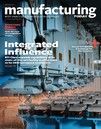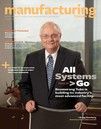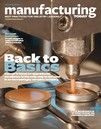Health Of A Nation
 The burden of rising health insurance costs.
The burden of rising health insurance costs.
Since the year 2000, the average portion that employees must pay towards benefits has risen dramatically. This is due to both reduced employer contributions, as well as rising health care costs. In the roaring 90’s, part of this was covered by salary increases and overtime compensation. Over the last five years, salary increases have drastically slowed, overtime has been cut and the net take home pay has decreased. Many employers are having to look for sustainable alternatives now or risk dropping health coverage as a benefit altogether. We have approached the breaking point much quicker than most had predicted.
The health care products that are being sought out as the lifesavers of the industry are Health Reimbursement Accounts (HRAs) and Health Saving Accounts (HSAs). These new products have partially been developed due to the shrinking market share of HMO plans. Most insurance carriers argue that the HMO model is outdated. Dollar first benefits are not only expensive, but are also difficult from an insurance standpoint to price out. Due to this pricing predicament, in many areas of the country, an HMO plan is actually more costly than a comparable PPO plan. The largest issue is that healthy employees receive very little benefit from this costly coverage, yet these are the people that need to be enrolled in the health insurance plan in order to help spread the risk over a large population so that premium and renewal rates are controlled.
The answer may lie in the HRA/HSA solution. Is it possible that if employees have some money at risk and are encouraged to actively participate in their own health care, the cost may come down due to competition? The question of “Is it covered by my co-pay?” may be replaced by, “Do I really need this procedure?” and “How much does it cost?” The fear is that employees will begin to question their doctors and the regimen that is required. It may just make the employee an educated consumer and aid the health care system as a side effect.
Let’s review the marketplace as most employers see it today. The typical PPO plan has a relatively low deductible and is loaded with token co-pays which cover doctor visits, prescription drugs and even emergency room visits. Most employees have now come to consider this the cost of health care. Employees pay virtually nothing at the “point of sale.” Not only does the healthy employee perceive little benefit except for peace of mind, but the active health user is disengaged with the process and concerned mostly from an ‘out of pocket expense’ view point.
The new HRA plans offer a higher deductible with decreased co-pays, while the HSA plans have taken out most co-pays altogether. In a perfect world, this will create an incentive for the employee to be engaged in his health care due to the fact that at the point of treatment there will be a larger out of pocket expense. This system is designed so that the reduction in health premiums will subsidize this increase. The healthy employee will see a benefit of reduced health care costs and a limit of expense to the employee or family, which still provides peace of mind. Realize that not only does the employee save money, but in some instances, so does the employer.
Health Reimbursement Accounts are an agreement by the employer to pay out money (usually toward the deductible) with a set cap. However, the arrangement is a nonfunded liability. The employer only needs to fund the reimbursement in the event these claims are incurred. HRA legislation is specific in the fact that they can only be employer funds, which means the employer retains complete ownership of any non-used funds. There is no required accumulation of credits of any non-used funds and most employers reset the reimbursement amount every year. Health Reimbursement Account regulations also state that the partners or shareholders of an LLC or S-Corporation cannot take the same tax benefits of the HRA as the average employee. Most feel that HRAs do an effective job of reducing the high initial cost of health care and also are effective in controlling renewals; however, there is a flaw. It has not fully engaged the employee due to the fact it is still employer money—whether realized or not.
The HSA concept has the employee accumulating employer money in their name, whether a claim is realized or not. The HSA will accumulate, grow tax-free and is fully portable. This means that the employees are 100% vested in the plan and can move their employer-provided funds upon termination whether it was voluntary or involuntary. The issue is that the funding of these vehicles could put the cost of health care in the same total range as today’s PPO product. The theory is that the base premium will be lower and that renewal increases will be controlled. The total cost to the employer, however, may not be. Presently we are not seeing the reduction in costs that had been first expected.
Industry experts predict that 40 million Health Savings Accounts will be opened in the next ten years. But those predictions were seen with Flexible Spending Accounts (FSAs) as well as Medical Saving Accounts (MSAs). Both are considered flops by industry standards. The resistance to change, as well as the learning curve of how to effectively use these options, will determine their fate. The public is resistant to change and in most areas of the country there are still demands for first dollar health care.
Although many feel that the new “consumer driven” health plans are actually cost sharing plans, the jury is still out. The learning curve on these plans is certainly not moving at the speed predicted and in some states where the cost savings is substantial, the cost to the employee who does not utilize full reimbursement is much greater than expected. Remember that if the company has continued users of health care, but the users do not have any major health conditions, what appears to be a savings to the company, may actually be a drain on the employees. It is important to understand your group and their use of your health plan in order to design the most effective plan, whether it be one of the new consumer driven plans or a dollar first PPO or HMO plan.
The design of a health care plan and what is implemented is imperative to health care being perceived as a benefit instead of an entitlement. The plan must effectively cover the needs of the company as well as the employees. We have certainly moved from the early 90’s model of “one size fits all.”







